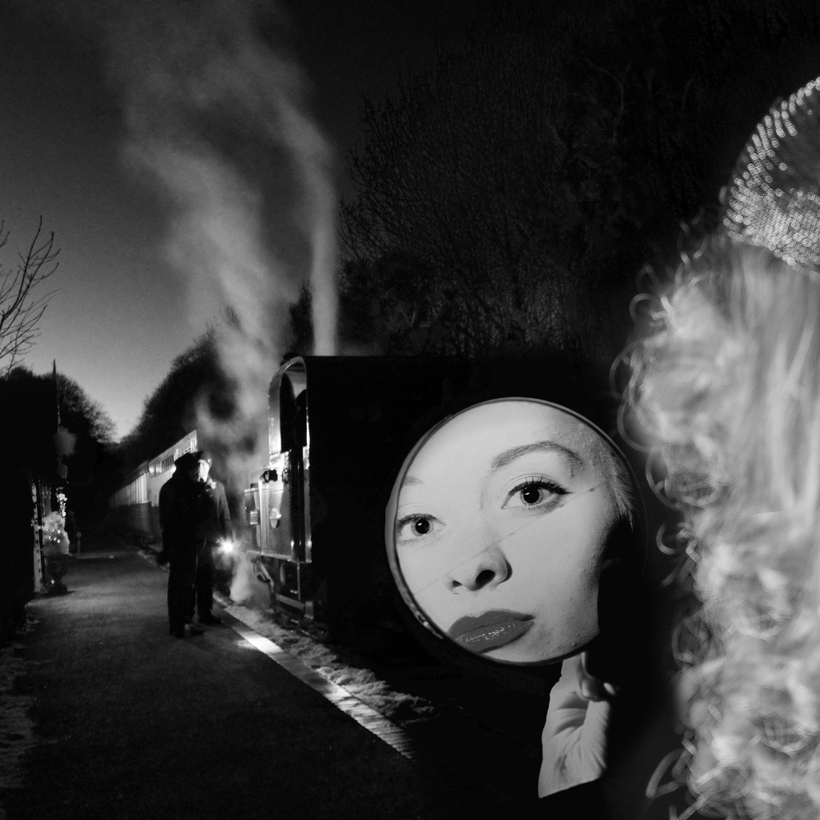In the far distant past, before there were private jets or even private-ish first-class cabins, the rich and famous would travel between New York and Los Angeles by train. The glamour and crazy-making nature of the cross-country journey was immortalized in the great screwball comedy Twentieth Century, starring John Barrymore as a down-on-his-luck impresario and Carole Lombard as his onetime protégé, who’s since shot to success under her own steam but has the misfortune to board the train he’s traveling on. A desperate Barrymore hilariously uses every trick in his bag to win her back in order to revive his fading career.
Dorothy B. Hughes’s Dread Journey, first published in 1945, reads like Twentieth Century’s dark mirror. The author puts another, more sinister Hollywood producer, Vivien Spender, on a Pullman train from L.A. to New York with both his latest discovery, whom he wants to star in his version of The Magic Mountain, and his brassy ex-protégé, Kitten Agnew, who’s still under contract for the same role. Despite Spender’s best efforts to release her, Agnew won’t go quietly. Spender is a colossal egomaniac who hides his ruthlessness behind an affable exterior, but those who know him aren’t fooled. Beneath the clink of cocktails and forced laughter from Agnew’s ineffectual group of friends, a slow drip of fear and unease seeps onto the train.
Dread Journey isn’t about who did it but who might do it, and to whom. The reader may wonder why these people don’t just get off at the next stop, but it’s a train of destiny, bound for death, and everyone has to play their part. What a shame Alfred Hitchcock never directed a movie based on this. A better marriage of material and director is hard to imagine.
This sprightly take on the gentleman-detective novel couldn’t be more charming. The gentleman in question is Australian, and the novel is set in Sydney in 1934, a welcome change of scene for this genre. Rowland Sinclair is an aristocrat, painter, and sometime race-car driver who has set up house with friends of a similarly bohemian bent. Chez Sinclair is a luxe artists’ enclave, animated by the creative impulse and a then radical political agenda. Hitler is stirring things up in Europe, and Sinclair, having seen firsthand the brutality of the Brownshirts in Germany, is decidedly anti, which earns him more than a few enemies in his social set.

Sinclair has volunteered to drive his yellow Mercedes S-Class in a charity race alongside Errol Flynn, among others, but events, most notably a murder in a Madame Tussauds–like House of Horrors museum, keep getting in the way of his practice runs. Australian writer Sulari Gentill drops real people—Flynn, race-car driver Joan Richmond, right-wing agitator Eric Campbell—into the narrative, and cleverly begins each chapter with a clipping from an old Australian publication, lending some period flavor. There are multiple characters and subplots whirling around—Sinclair has many friends and enthusiasms—so you have to hold on tight as he dashes about on a variety of missions. For an artist, he seems to provoke an inordinate number of fistfights and gunshots, but Gentill handles it all with a light touch.
Give the Devil His Due is book No. 7 of the Rowland Sinclair series, and though it may be easiest to start at the beginning, you could do worse than to leap right in. Sinclair makes a dynamic but thoughtful hero, and the sobering political moment is artfully balanced by Gentill’s fizzy portrait of Sydney’s high society, more loosey-goosey than its British counterpart.
The most interesting thing about Peter Robinson’s 26th Inspector Banks novel is not Alan Banks or the crimes he and his team are investigating, but a subplot that never quite meshes with the rest of the book, involving a vengeful woman. Nelia Melic, who goes by “Zelda,” is only tangentially related to Banks; they’re casual friends who share a common enemy. She’s an artist and a “super recognizer”—she never forgets a face—whose gift enables her to work as a police consultant. Originally from Moldova, Zelda was snatched off the street and trafficked for sex for 10 years by thugs who raped and tortured her to keep her in line, until she escaped in Paris. She’s made a secure new life for herself in northern England, but the past is never far from her thoughts. Then, while having a drink in a London bar, she spots one of her old tormentors and an idea begins to bloom in her anxious, traumatized, sleep-deprived mind.
Casual friends who share a common enemy.
Meanwhile, Banks is looking into the fatal stabbing of a young Middle Eastern boy whose body has been dumped in a wheelie bin on an Eastvale estate, a crime followed by more murders that lead to revelations about corrupt local real-estate practices, racism on the estate, and the drug-dealing methods of a foreign syndicate. But none of this feels organic—the book is dense with information seemingly for its own sake, not in service to the story.
Alan Banks is a wonderful character who has evolved in compelling ways over the years, and Robinson’s is undeniably one of the great contemporary British crime series. But in this somewhat problematic entry, it’s Zelda who is most vivid, her scars hidden beneath a gorgeously composed exterior and the need to exorcise the cause of her anguish a surprising development even to her.
Lisa Henricksson reviews mystery books for Air Mail. She lives in New York City

